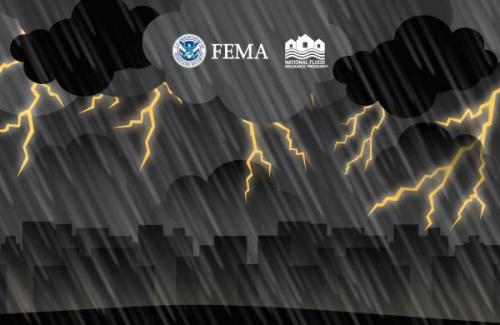While agents have the benefits of knowing what each policy covers, most of your clients don't and can get easily confused when it comes to starting a claim. With regards to flood insurance, the NFIP offers resources to help you and your clients understand their coverage and the claims process. Here are some questions your clients may have and the answers you can provide them.
What is flood insurance?
- Flood insurance is coverage that is used to help people rebuild after a flood. It's meant as a financial guardrail to ensure people have support after flood disasters, so they can rebuild more quickly, easily and less stressfully. It's an incredibly valuable form of insurance many people lack, simply because they may incorrectly assume that flood damage is covered by their homeowners or renters insurance.
When do I use flood insurance?
- To be eligible to file a claim using flood insurance, it's important to understand how the NFIP defines a flood. A flood is
- A general and temporary condition of partial or complete inundation of two or more acres of normally dry land area or of two or more properties (one of which is your property) from:
- Overflow of inland or tidal waters;
- Unusual and rapid accumulation or runoff of surface waters from any source; or
- Mudflow*.
- Collapse or subsidence of land along the shore of a lake or similar body of water as a result of erosion or undermining caused by waves or currents of water exceeding anticipated cyclical levels that result in a flood as defined above.
- A general and temporary condition of partial or complete inundation of two or more acres of normally dry land area or of two or more properties (one of which is your property) from:
- What this definition means, is that if your client's home has pipes burst and flood the basement, that damage would not be covered by flood insurance.
- Another example is, if a storm tears your clients roof off their home and the resulting storm floods their house, that would not be covered by flood insurance. That damage would be classified as water damage caused as a result of wind damage and would fall under other coverage but not flood insurance.
- For more information about how the NFIP defines a flood, you and your clients can download a copy of Answers to Questions About the NFIP.
What does flood insurance cover?
- The NFIP offers two types of coverage: building and contents.
- A building coverage protects the structure and its foundation. This includes plumbing and electrical systems, central air and heating systems, attached bookcases, cabinets, carpets and paneling.
- A contents coverage protects personal belongings such as clothing, furniture, washer and dryer, curtains.
- The average NFIP flood insurance policy has a coverage limit of $250,000 for damage caused to the building and a limit of $100,000 for damage to personal property.
What doesn't flood insurance cover?
- Flood insurance is just that — insurance that covers losses caused directly by flooding. If a home is blown apart by dangerous winds, that would fall under wind insurance.
- Personal property stored in basements is not covered by flood insurance, things such as finished basements and home improvements, couches and televisions would not be covered. For your convenience, the NFIP has an infographic of what's covered by basement flooding.
For resources, infographics and other tools that make your life as an insurance agent easier, visit https://agents.floodsmart.gov.

